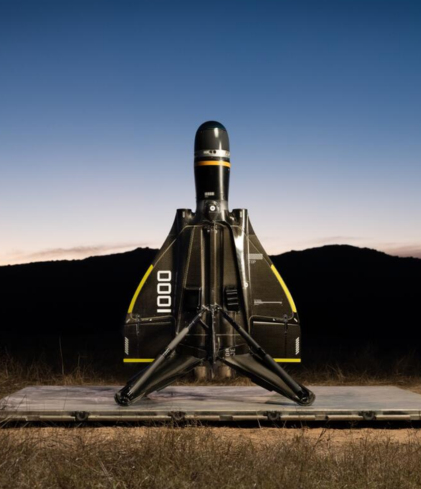Becoming a Chief Technology Officer (CTO) is the ultimate career goal of most software engineers. But what does it take to get there, and what do you need to bear in mind before making the switch?
A CTO has responsibility for an organisation’s entire technology function. But that’s about as far as it’s possible to generalise: there are as many different nuances to the CTO role as there are companies in the world.
At the largest end of the spectrum, the CTO of a big global corporation might have the ultimate responsibility for thousands of engineers. This type of CTO will often have held engineering director roles at companies on a similar scale before stepping into the overall CTO role. In organisations like this, being a CTO is almost entirely about management; directing what amounts to a team of senior engineering managers and directors, each of which lead their own technical divisions.
But at the other end of the scale there is the founder-CTO; someone who joins as one of the founders of a company, or one of its first employees.
One CTO that fits into this founder-CTO category is Walter Holohan, CTO of the fitness app Runna.
Holohan joined Runna as its first employee, initially holding the role of Technical Lead before being promoted to CTO after a year.
“I joined the two founders as the Tech Lead. I helped the guys get an MVP up and running,” said Holohan. This involved packaging the tool the founders had put together to generate a running plan onto AWS, and enabling this to generate a PDF of customers’ individual training plans.
“It was all very hacky, low-code, just about getting an MVP together,” says Holohan.
Building a product from scratch obviously requires confidence across the technology stack. Ultimately, when you’re in sole charge of a small engineering team like this and building an app from the ground up, you need to be across everything that your team will be working on, and in the early days you might have to build a lot of it yourself. So it’s no good compartmentalising: you’ll need to embrace every layer of the stack you’re working with.
“Given I was a team of one, I had to be really careful about the early decisions I made from a technical perspective,” says Holohan. Getting these decisions right – in Runna’s case, building the app on React Native with Typescript on AWS infrastructure – then made it easier to scale the app and the team further down the road.
“We could go and hire Full Stack Javascript engineers and they could come in and contribute end to end,” he says.
It was at this point, after a year or two when the app and the team started to scale, that Holohan transitioned into the CTO role. “Over the next couple of years, I gradually became more and more hands off.”
The challenges of becoming a CTO
Despite the team now comprising around 60 engineers across multiple disciplines, Holohan still tries to remain as hands on as possible. But besides the experience of building a very early-stage product, being a CTO is always going to be more about people management than it is about being hands on with the code. That can be a challenging transition for some.
For Holohan, the biggest change that he noticed on becoming a CTO was the experience of growing his network and thinking less about day-to-day building and more about long term technology planning.
“That became about building my network, going to CTO dinners, finding people that I could message when we were doing something new to me, like building out our first data warehouse,” says Holohan.
Scaling the team in the right way has been Holohan’s biggest challenge. “It’s really hard as you hire more and more engineers,” he says. “You have to start splitting teams into sub-teams, and start thinking about the balance between building new features and maintaining and improving the foundations of the product.”
With this comes the perennial challenge faced by all engineering teams; the trade-off between maintaining quality and shipping at speed. Once you have made the step from engineer to CTO, this question stops being abstract or theoretical, and starts becoming a fundamental part of your role.
“Picking that bar of quality, and optimising for speed around that,” as Holohan puts it.
Top tips for aspiring CTOs
So what advice does Holohan have for any aspiring CTOs out there?
First and foremost, keep things simple. Avoid the temptation to over-engineer, because the more complicated your technology stack, the harder it will be for new hires to get to grips with once you start scaling the team and the product. Keeping it simple has allowed Runna to “move quickly, and onboard lots of new employees and have them be able to contribute straight away and provide a lot of value.”
He also believes that growing your network early on will pay dividends both on your way to becoming a CTO, and once you are established in the role. There are all sorts of ways to do this, but taking a direct approach worked for Holohan.
“Within London, looking out for companies that are a year or two ahead of us - reaching out to their head of engineering or CTO and saying ‘hello, you’re an amazing team, I’d love to be able to pick your brains.’”
This has, of course, flipped in recent years as Holohan has become more established as a CTO, and Runna as a product. Now, he is frequently on the receiving end of outreach like this, and he views it as important to be willing to give back in the same way to people trying to follow the same path.
“I’ll always give that time to people,” he says. This attitude reflects a management style that also puts time aside to coach and mentor the engineers within his team. “Over the years even as busy as I got I’d always take time out and help any of the engineers in the team; I’d always try to prioritise helping to unblock them over my own to-do list,” he says. “All the engineers really appreciate that.”
This isn’t just selfless management; Holohan finds it a useful way to square the circle of his role being at once more managerial, but also having overall responsibility for what is going on in an increasingly complex technology stack. “As the team started to grow I’m not as in the weeds as much, so for me to be able to jump in and give the engineers help actually gives me that context of what’s going on,” he says.
Ready to take the next step on your pathway to becoming a CTO? Speak to OHO Group’s team of experienced consultants today.




